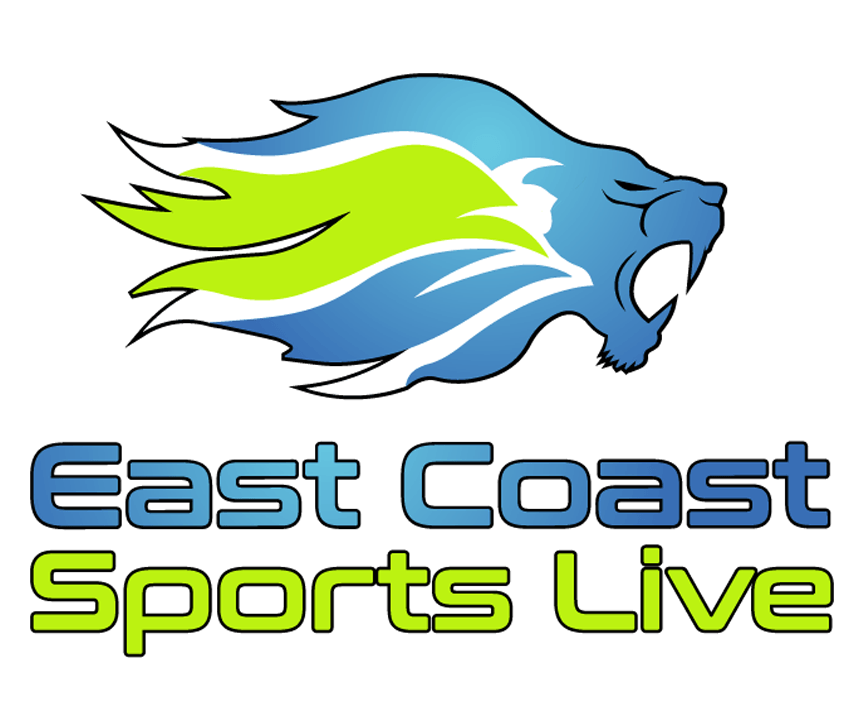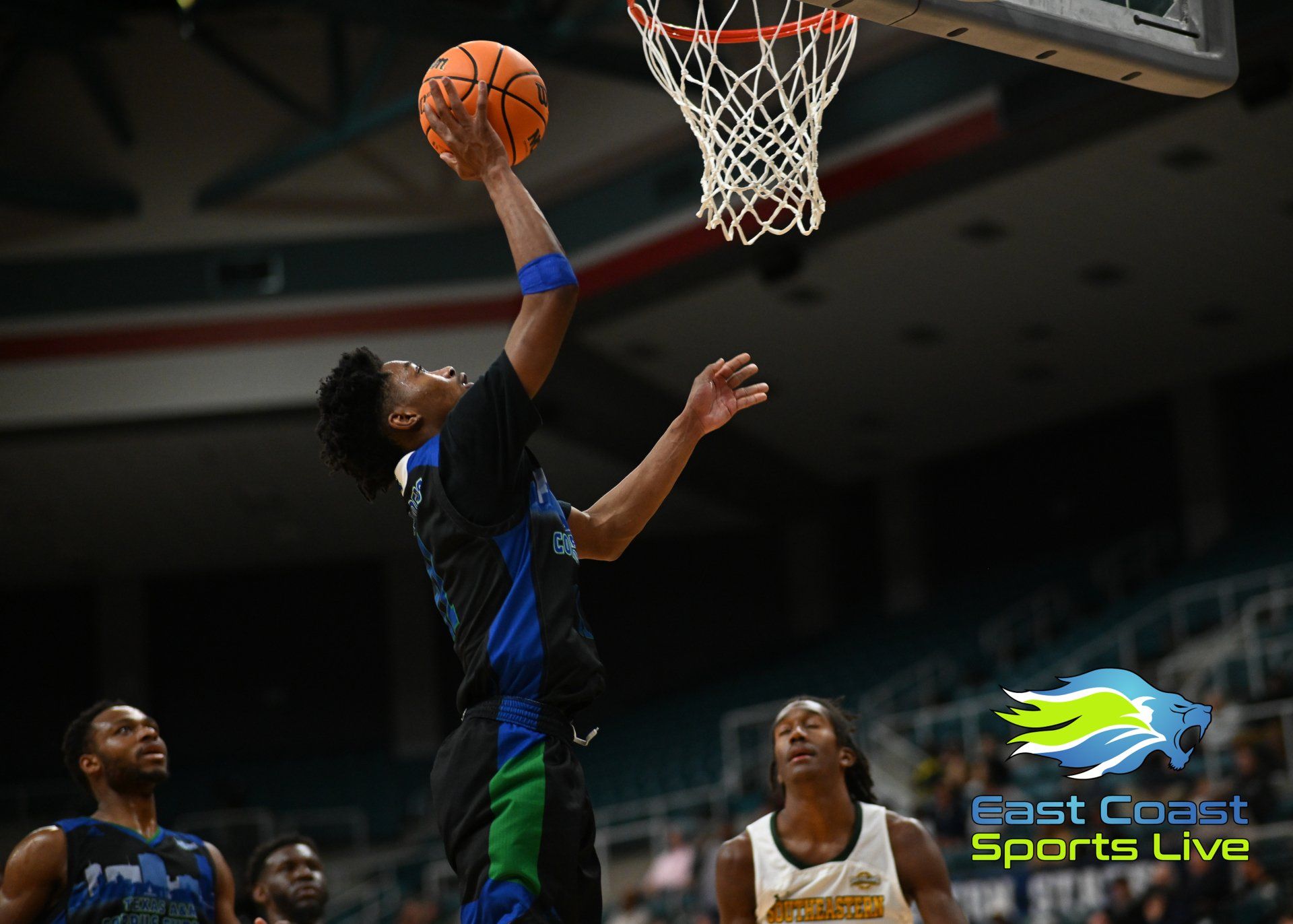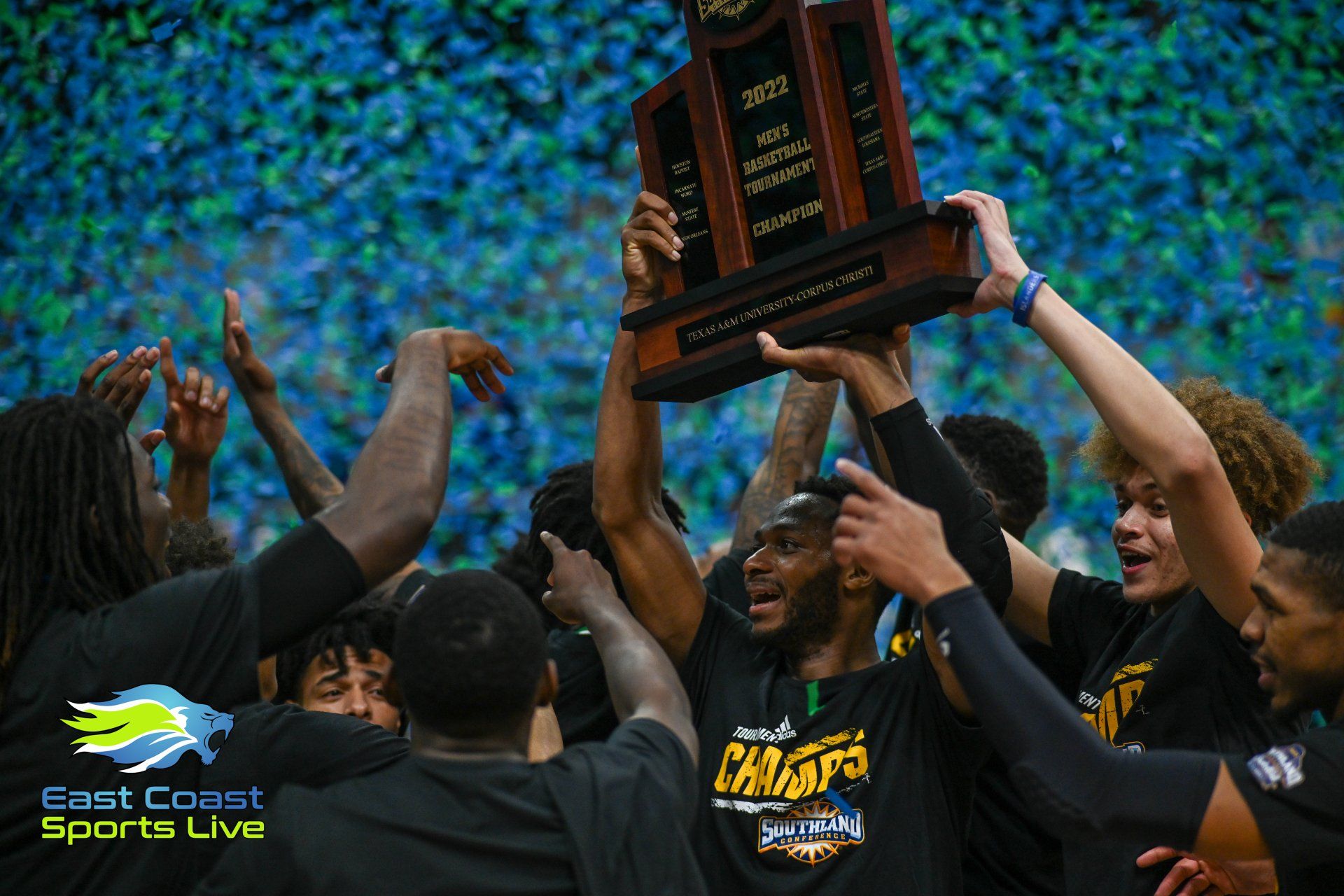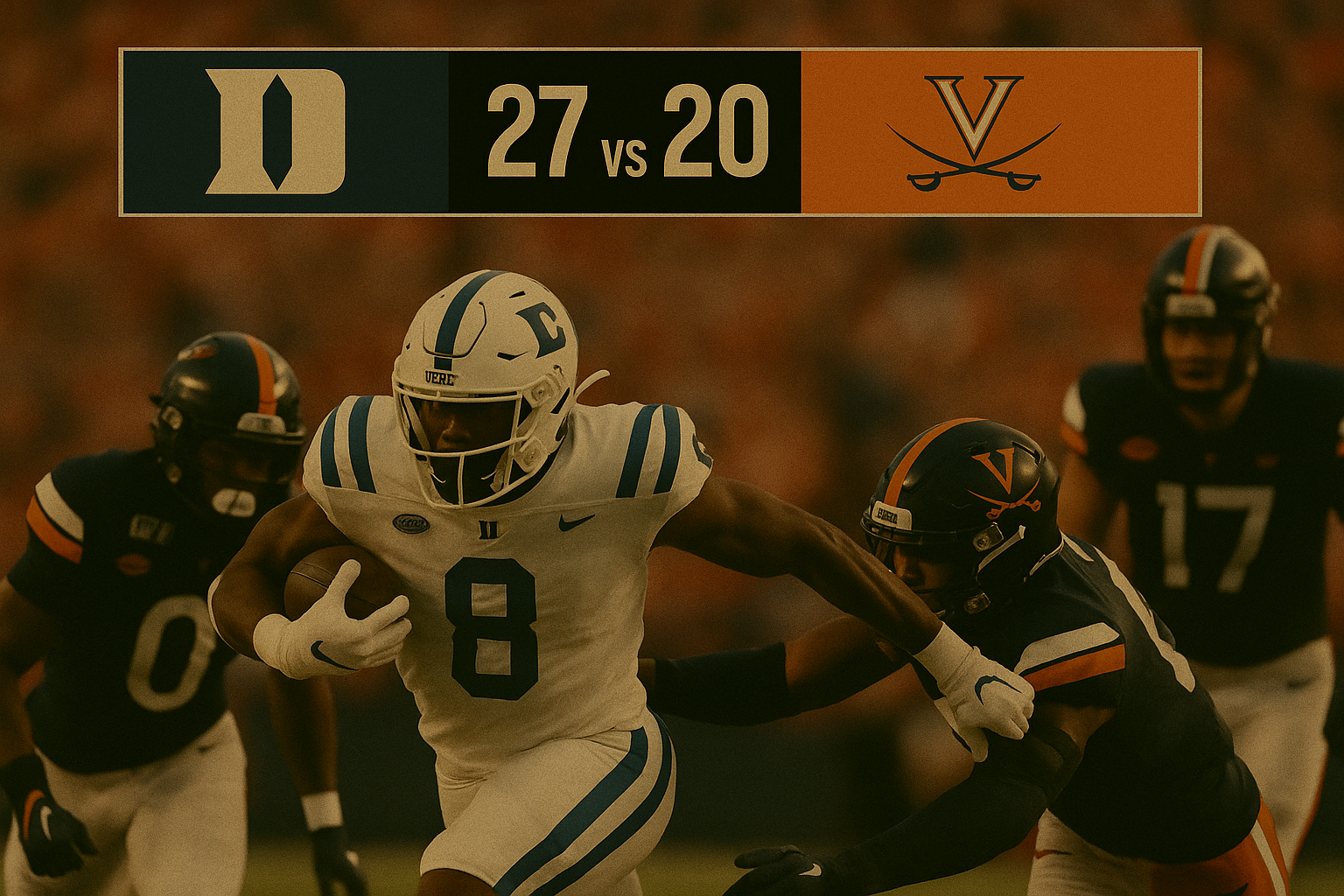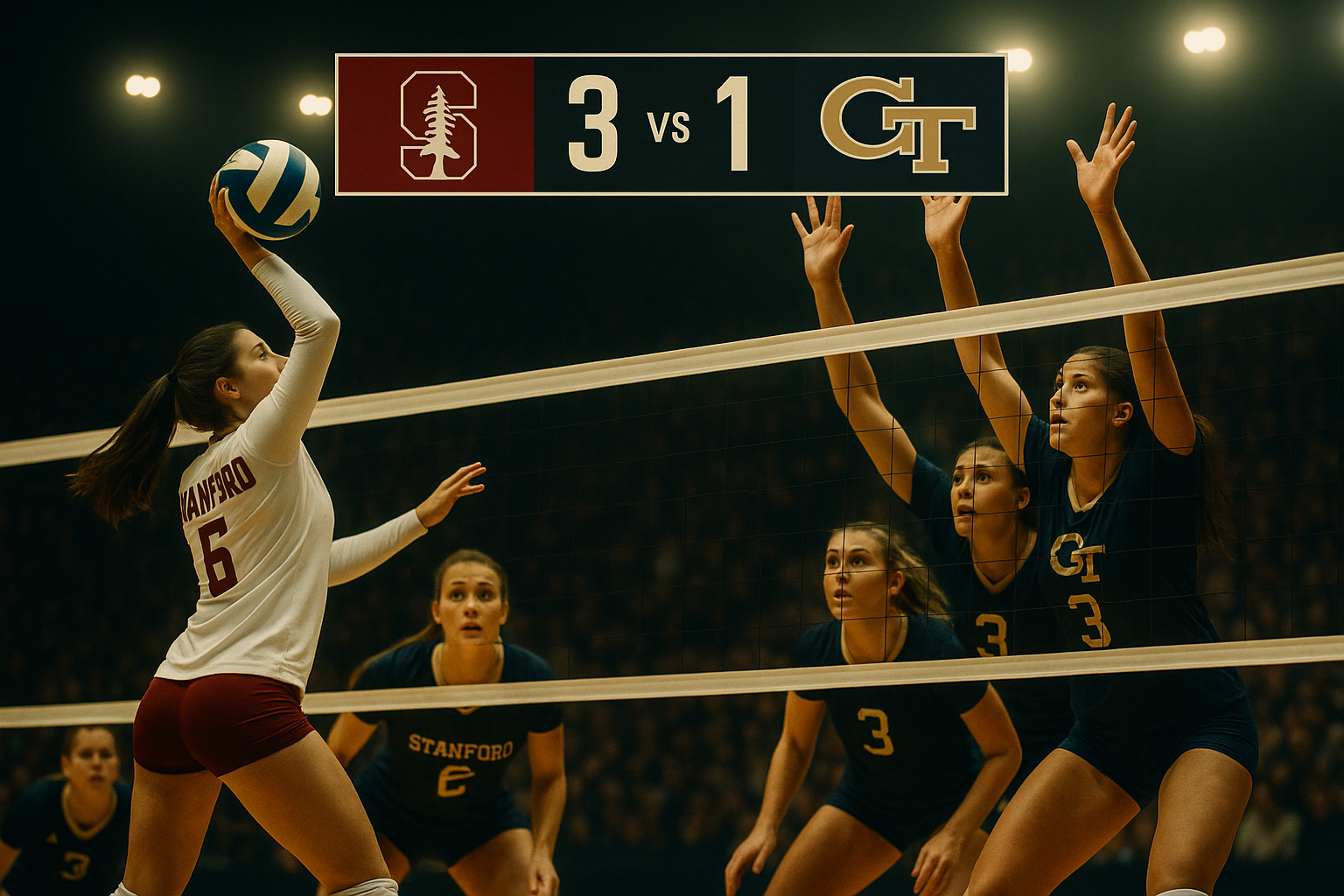East Coast Sports Live
Men's Basketball
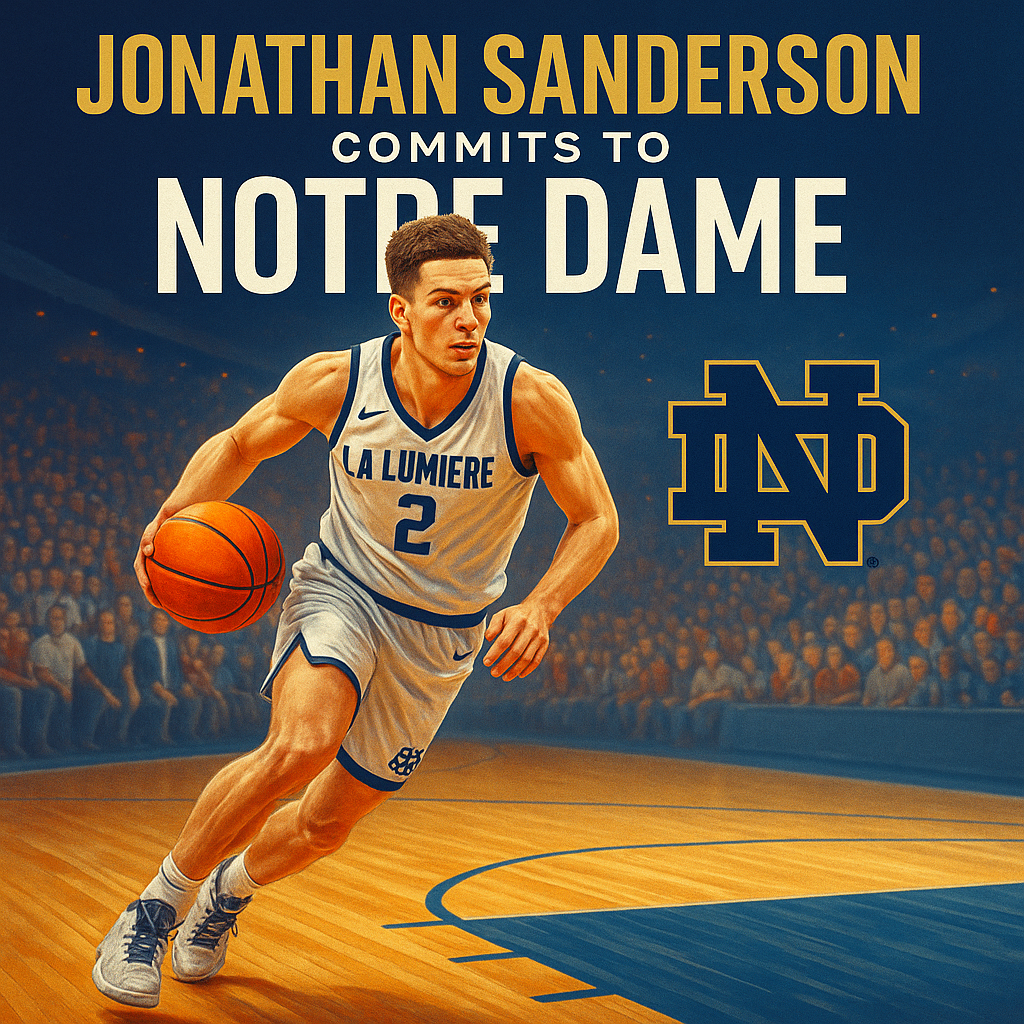
Notre Dame’s 2026 men’s basketball recruiting class made a significant leap with the commitment of highly touted point guard Jonathan Sanderson. A standout performer at La Lumiere School in Indiana and Tennessee's 2024–25 Gatorade Player of the Year, Sanderson’s decision reshapes not just Notre Dame's future but also shifts momentum away from major competitors like Michigan State and Ohio State. Elite Talent and Strong Bloodlines Jonathan Sanderson’s pedigree in the basketball world runs deep. The 6-foot-2 playmaker is the son of longtime college basketball strength coach Jon Sanderson, whose recent hire at Notre Dame as the director of men's basketball strength and conditioning further ties the family into the Fighting Irish program. While some observers may speculate about family influence in the decision, Notre Dame had pursued Jonathan long before his father’s move to South Bend. Sanderson has had an impressive journey through multiple competitive basketball programs. After emerging from Saline High School in Michigan and gaining notoriety for his scoring ability at Nashville’s Ensworth School, he transitioned to La Lumiere—one of the nation’s most respected prep schools. This move put him squarely in the national spotlight, and his game has only grown more versatile. Skillset Built for Modern Play A natural floor general with a smooth shooting stroke, Sanderson brings a rare combination of three-level scoring, vision, and defensive instincts. He averaged over 24 points per game last season while contributing across the board with rebounds, assists, and steals. Coaches and analysts have praised his ability to control tempo and break down defenses, all while maintaining poise under pressure. At La Lumiere, Sanderson honed his craft against elite-level competition. His ability to finish at the rim, hit contested jumpers, and create separation will translate well to the collegiate level. Combined with his high basketball IQ and leadership qualities, he is expected to be a cornerstone of Notre Dame’s backcourt for years to come. Notre Dame’s Recruiting Momentum With Sanderson’s commitment, Notre Dame’s 2026 class already boasts one of the top backcourt additions in the nation. He ranks No. 51 overall and is considered a top-10 point guard in most industry rankings. His pledge marks the second major commitment under head coach Micah Shrewsberry from La Lumiere, following the earlier signing of five-star wing Jalen Haralson. Shrewsberry’s recruiting philosophy emphasizes intelligent play, spacing, and guard development—traits that align perfectly with Sanderson’s strengths. The commitment also signals that Notre Dame is becoming an increasingly attractive destination for top-tier prospects, particularly those looking for a structured system that allows creativity in the backcourt. A Major Blow to Michigan State Sanderson’s choice is undoubtedly a setback for Michigan State. The Spartans had prioritized the four-star guard and were among the frontrunners for his commitment. Losing him to a rival school like Notre Dame—especially after Michigan State’s recent ranking at No. 21 in Jon Rothstein’s 2025–26 preseason projections—could alter recruiting strategies and late-stage roster planning for Coach Tom Izzo’s staff. With uncertainty now surrounding the Spartans’ backcourt plans for the 2026 class, they will need to pivot quickly to other available prospects to maintain their status as a top-25 contender in the national landscape. Potential Teammate on the Horizon? In a development that could further enhance Notre Dame’s 2026 outlook, the program is also pursuing top-100 center Gan-Erdene Solongo, a highly sought-after big man who has a personal connection to the Sanderson family. As Solongo’s legal guardian, Jon Sanderson’s move to South Bend could play a role in that recruitment. Landing Solongo would give the Irish one of the most complete incoming classes in recent memory. What This Means for 2026 Jonathan Sanderson’s commitment reshuffles the recruiting power balance heading into 2026. For Notre Dame, it's a statement of intent and a demonstration that the program can compete with Big Ten powers for premier talent. For Sanderson, it’s an opportunity to lead a rising program with a clear vision and a strong foundation already in place. As college basketball continues to evolve, dynamic guards like Sanderson—who can create offense, lead, and defend—are becoming invaluable. Notre Dame’s ability to secure such a talent sets the tone for what could be a landmark class.
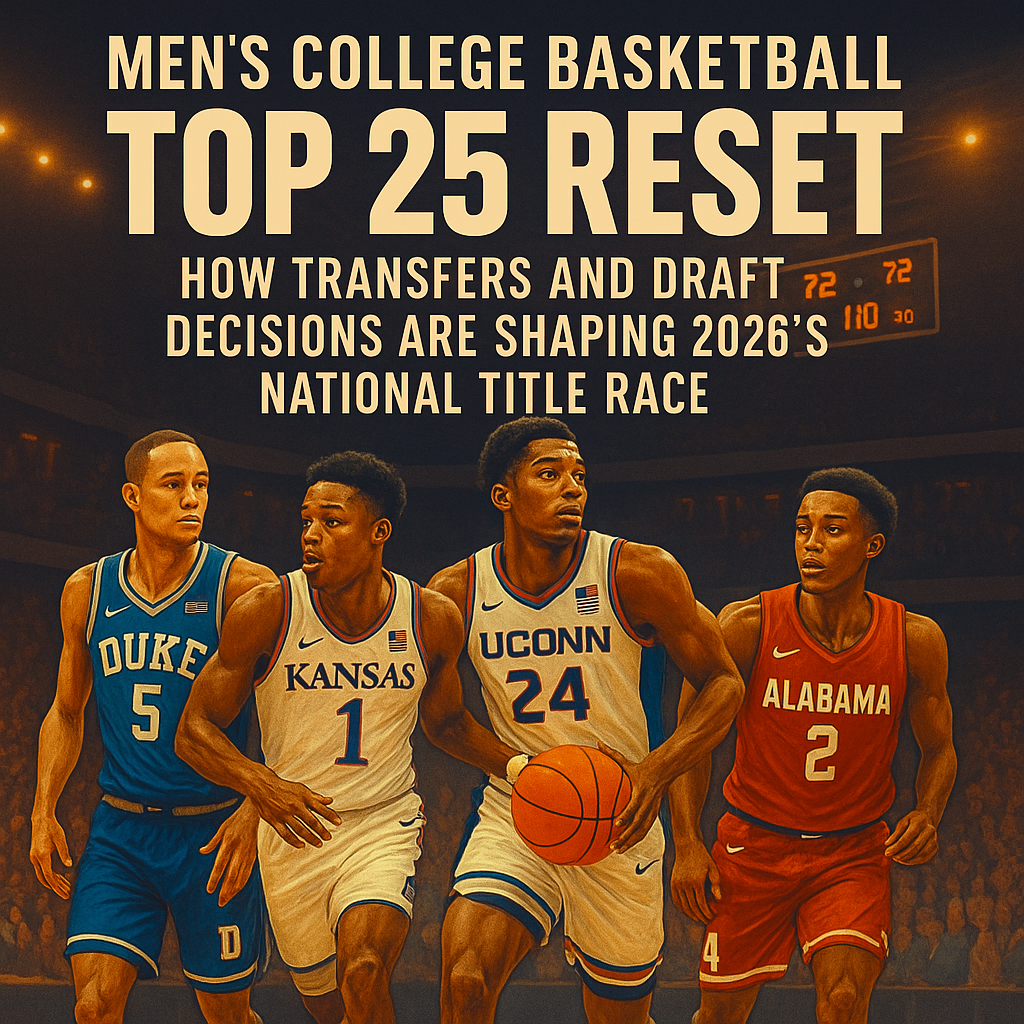
The offseason in men’s college basketball has evolved into a defining period for national contenders. The combination of transfer portal acquisitions and NBA Draft declarations has turned spring and summer into a high-stakes game of roster management. In the wake of these developments, the 2026 national title race looks considerably different than it did just weeks ago. With key players returning, new stars arriving via transfer, and some programs hit hard by unexpected departures, the Top 25 has undergone a significant shake-up. Here’s how the contenders stack up heading into the fall, based on the latest changes. No. 1: Kansas Reloads with Depth and Experience Kansas enters the 2026 season with momentum and a complete roster. The return of key starters, coupled with two impact transfers, gives the Jayhawks arguably the deepest team in the country. Their rotation boasts size, athleticism, and veteran experience—three traits that typically forecast postseason success. After a Sweet 16 exit last year, Kansas looks primed to return to the Final Four. Top Five Risers 2. Duke Despite losing Cooper Flagg to the NBA, Duke remains a top contender thanks to its outstanding recruiting class and return of several key sophomores. With a backcourt that features a blend of size, shooting, and defensive upside, the Blue Devils will continue to be a force in both ACC play and national competition. 3. Houston Houston’s blueprint remains the same: suffocating defense and offensive discipline. The Cougars return four of their top six players and added a transfer forward with elite rebounding and shot-blocking ability. Head coach Kelvin Sampson’s system remains one of the toughest to prepare for, especially in March. 4. Alabama Alabama made two of the most important portal additions of the offseason, securing a proven scorer and a floor-spacing forward. Their roster is built for high-tempo, high-efficiency basketball. With returning depth and strategic upgrades, they’ve become a legitimate Final Four pick. 5. UConn The Huskies are adjusting to life after a pair of NBA-bound starters, but the culture and infrastructure remain elite. Three experienced transfers bring both size and versatility, and the team’s returning backcourt will be among the most cohesive in the nation. Transfer Portal Shakeups and New Dynamics Several programs have made dramatic moves through the portal: Illinois added two high-major starters, providing shooting and wing defense to a team that underachieved in the tournament. Texas revamped its guard rotation with an elite scorer from the Pac-12 and a floor general from the SEC. North Carolina rebuilt its frontcourt after multiple departures, bringing in proven post players to pair with returning perimeter talent. These additions have not only improved depth but in some cases redefined the identity of these programs entirely. Teams Facing Uncertainty Kentucky With multiple players heading to the NBA and limited activity in the transfer market, Kentucky’s prospects are murky. While a talented freshman class offers upside, the lack of experience and leadership could pose problems in the early stages of the season. Purdue Following the departure of Zach Edey, Purdue faces a total reset in the post. Their perimeter talent is solid, but without a dominant inside presence, it’s unclear if they can replicate last year’s success. Baylor Baylor had been a projected top-10 team, but the loss of two expected returnees to the draft has altered their trajectory. While still dangerous, the Bears now find themselves in the second tier of contenders. Programs to Watch Saint Mary’s Returning nearly their entire core, Saint Mary’s combines continuity with high-level execution. They’ll be a tough out come March and may climb into the top 15 by midseason. Providence With one of the most aggressive portal strategies of the offseason, Providence has the pieces to surprise. Newcomers complement an already promising nucleus. Arkansas A coaching overhaul and new high-profile transfers make Arkansas a team with unknown potential. If chemistry develops, they could rise fast. Looking Ahead to November As summer workouts begin, teams are working to build chemistry, install systems, and define roles. Coaches have transitioned into full-time roster architects, tasked with creating cohesion from constantly shifting pieces. In this new era of college basketball, adaptability and structure are as important as recruiting rankings. The upcoming season promises one of the most competitive landscapes in recent memory. With so many teams undergoing transformations, the road to the Final Four will test not only talent, but leadership, resilience, and the ability to gel under pressure. Stay tuned—college basketball’s new era is just getting started.

The forward’s shocking move intensifies a historic rivalry and fuels debate over loyalty, NIL, and the modern transfer landscape. In one of the most buzzworthy transfers of the 2025 college basketball offseason, Ven-Allen Lubin is making headlines for trading Carolina blue for Wolfpack red. The former University of North Carolina forward has committed to NC State , becoming the rare player to move directly from one storied ACC rival to another. Lubin, a 6-foot-8 forward, made waves earlier this spring when he entered the transfer portal. At the time, he publicly indicated a desire to return to Chapel Hill, citing uncertainty surrounding the NCAA’s evolving Name, Image, and Likeness (NIL) regulations and a pending settlement. However, his recent decision to join NC State has caught both programs—and fans—off guard. A Journey Through the Transfer Era Lubin’s collegiate path has been anything but conventional. After starting his career at Vanderbilt , he transferred to North Carolina , where he made an immediate impact. During the 2024–25 season, he averaged 8.7 points and 5.5 rebounds per game , emerging as a pivotal contributor down the stretch. He stepped up in crucial games, including multiple double-doubles that helped the Tar Heels reach the NCAA Tournament. Despite financial arrangements reportedly in place for a return to UNC, Lubin changed course. With the rise of NIL-driven mobility and shifting team dynamics, his transfer to NC State marks his third school in as many years , a sign of the times in modern college basketball. His presence on the Wolfpack roster instantly adds experience, size, and athleticism to new head coach Will Wade’s frontcourt. For NC State, this is not just a strategic acquisition—it’s a statement of intent. A Bold Move Across Tobacco Road Transfers between heated rivals are rare—and rarely well received. Lubin’s move directly from UNC to NC State, without a stop in between, has stirred deep emotions among fans and alumni. It’s the first such direct transfer between the schools in decades, and Tar Heel supporters have been vocal in their disapproval. Lubin’s shift has drawn criticism and even mockery from some quarters of the UNC community. Still, the move highlights a broader reality: the collegiate athletic landscape has changed. Player loyalty, once assumed, now competes with professional ambitions, NIL opportunities, and personal considerations. For Lubin, the opportunity to play a prominent role in Wade’s system and compete for an expanded platform likely played a key role in the decision. At NC State, he is expected to step into a featured frontcourt position, with the program undergoing a major rebuild and aiming for postseason contention. Tar Heels Rebuild Without Lubin North Carolina, for its part, has taken steps to reshape its roster for the 2025–26 season. After relying heavily on a smaller lineup during Lubin’s tenure, the Tar Heels prioritized size and versatility in their offseason recruiting. The goal: rebuild the interior presence and avoid the limitations that plagued the team late in the season. Despite the abrupt departure, UNC remains optimistic about its future. Head coach Hubert Davis has retooled with a blend of transfers and incoming talent to address key weaknesses exposed during the past year. Still, Lubin’s exit leaves a hole—not just in the rotation, but in the fabric of the rivalry. Impact on the Rivalry and Fanbase The UNC–NC State rivalry is among the most intense in college basketball. While their showdowns are always highly anticipated, Lubin’s transfer has added fuel to an already white-hot fire. The two teams won’t meet in Chapel Hill during the regular season—an unfortunate quirk of scheduling that deprives fans of a potentially electric atmosphere. For the first time in over a century, the Tar Heels won’t host the Wolfpack at home, sparing Lubin from facing an onslaught of boos on familiar hardwood. Still, the drama is far from over. Should the teams meet in the ACC Tournament or NCAA postseason, Lubin’s transfer will become a major storyline. Until then, social media, message boards, and sports talk radio are likely to keep the debate alive. A Symbol of College Basketball's Evolution Lubin’s transfer underscores the rapid transformation of college basketball. The introduction of NIL and the loosening of transfer rules have empowered athletes in unprecedented ways. While some view moves like Lubin’s as opportunistic, others argue that players deserve the same flexibility and agency long afforded to coaches and administrators. As college athletics continues to evolve, the boundary between tradition and progress is being tested. Lubin’s decision to join NC State may rankle some, but it’s emblematic of a new era—one where athletes, not institutions, increasingly control the narrative.
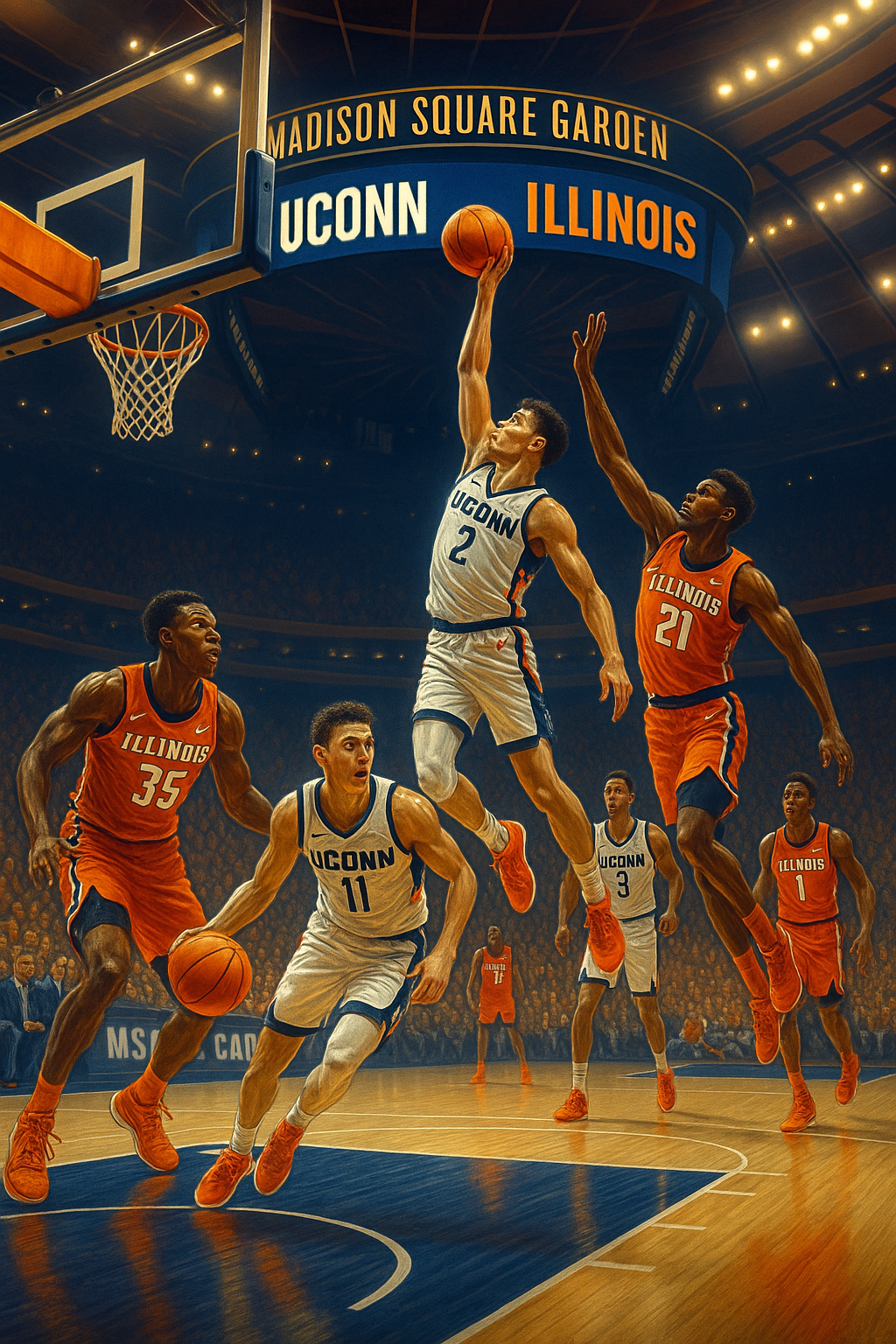
A rematch of 2024’s Elite Eight showdown promises a marquee non-conference matchup in the 2025–26 college basketball season. The stage is set for one of the most anticipated early-season matchups in college basketball: UConn and Illinois will face off on November 28 at Madison Square Garden , bringing together two nationally ranked programs for a high-stakes non-conference showdown. This game, scheduled for Black Friday , marks the fifth meeting between the two programs. The last clash came in the 2024 NCAA Tournament’s Elite Eight, where UConn surged past Illinois with a commanding 77–52 victory—part of their eventual run to the national championship. Now, Illinois has a golden opportunity to seek redemption on one of basketball’s most iconic stages. A New Chapter in a Short But Intense Rivalry While UConn holds a 3–1 series advantage over Illinois, the Illini enter the 2025–26 season with renewed strength and high expectations. Ranked No. 9 in early projections, Illinois has fortified its roster with Andrej Stojaković , a versatile scorer and the son of NBA great Peja Stojaković, and Zvonimir Ivišić , a towering 7-foot-2 forward joining his twin brother Tomislav on the squad. For UConn, ranked No. 11 in the Bart Torvik early rankings, the core remains solid. Star returners include Alex Karaban , Solomon Ball , and Tarris Reed Jr. , who led the team in rebounding last season. Adding firepower to the lineup is five-star freshman Braylon Mullins , ranked No. 12 nationally, and Silas Demary Jr. , a dynamic guard transferring in from Georgia. The matchup is shaping up to be a battle of depth and experience. Both programs have legitimate Final Four aspirations and have taken different approaches to building their rosters: Illinois leans on high-impact transfers and size, while UConn’s continuity and talented freshmen may give them a long-term edge. Illinois Embraces the National Stage This upcoming clash will mark Illinois’ fourth consecutive appearance at Madison Square Garden , further cementing their status as a nationally relevant program. In the past three seasons, the Illini have logged key games against teams like Duke, Arkansas, and Florida Atlantic at the iconic venue. Although their most recent trip to MSG ended in a tough loss to Duke, Illinois has enjoyed notable wins there under head coach Brad Underwood , including victories against Texas and Maryland. Their 3–2 record at the Garden under his leadership reflects both their resilience and willingness to embrace the spotlight. In addition to the UConn matchup, Illinois is scheduled for other challenging non-conference games. They will face Alabama at the United Center in Chicago, Tennessee in Nashville, and Missouri in the annual Braggin’ Rights game in St. Louis. All of these contests are expected to be against top-30 opponents, based on early projections. UConn’s Quest for Continued Dominance Coming off two national championships in three years, UConn is entering a new era under head coach Dan Hurley , aiming for a third title in four seasons. Their 2025–26 non-conference schedule is stacked, including matchups against BYU (featuring top NBA prospect AJ Dybantsa), Arizona , Florida , and Texas . The November 28 game against Illinois will be a centerpiece in a stretch of high-profile games. UConn's depth, scoring consistency, and defensive intensity have made them a perennial threat, and this season is no exception. The program’s return to Madison Square Garden also holds significance. While technically a neutral site, UConn fans have long treated the arena—sometimes dubbed “Storrs South”—as a second home due to the school’s proximity and historical success in the Big East tournament held there. A National Spotlight Game The timing of the matchup, on Black Friday, ensures it will receive prime national television coverage. With the NBA dark for Thanksgiving weekend and the NFL’s Thanksgiving slate complete, college basketball will take center stage, and UConn vs. Illinois will headline the day’s lineup. More than just a regular-season game, this clash is a litmus test for both programs as they gauge their readiness for March. It’s a preview of tournament-level intensity, played out under the bright lights of MSG. Whether it’s a revenge game for Illinois or another statement win for UConn, fans are guaranteed one thing: an elite-level basketball showcase to kick off the holiday season.

The Duke Phenom Secures $28 Million in One Season, Redefining the Value of College Athletics In a groundbreaking example of the growing power of name, image, and likeness (NIL) deals, Duke basketball sensation Cooper Flagg earned a staggering $28 million during his single season in college. The revelation not only cements his status as one of the most marketable college athletes in history but also shifts the landscape of college sports economics permanently. A Year of Dominance—On and Off the Court Arriving at Duke as the nation’s No. 1 recruit, Flagg entered the season with towering expectations—and surpassed them. Averaging 19.2 points, 7.5 rebounds, and over 4 assists per game, he led the Blue Devils to a Final Four appearance and claimed National Player of the Year honors. However, Flagg’s dominance wasn’t limited to the court. His off-court business dealings redefined what’s possible in the NIL era. His earnings came from at least six major endorsement deals , including two headline agreements: a $13 million contract with New Balance and a $15 million partnership with Fanatics . These two deals alone amounted to the reported $28 million, though his total income may be even higher when including brands like Gatorade, AT&T, Cort Furniture , and The NIL Store . Brand Power: A Marketing Machine in the Making Flagg quickly became a cornerstone athlete for New Balance, even appearing alongside NBA and WNBA stars like Kawhi Leonard , Tyrese Maxey , and Cameron Brink in national campaigns. Fanatics, meanwhile, made Flagg a signature figure, launching his first official “rookie” card as part of the 2025 Bowman University Chrome set , released during his breakout year at Duke. Beyond the spotlight of basketball, Flagg’s marketability was driven by a unique combination of elite talent, charisma, and early brand alignment. His deals often mirrored the magnitude of those reserved for professionals, positioning him alongside figures such as Victor Wembanyama and CJ Stroud , who are also part of Fanatics’ exclusive athlete roster. A New NIL Standard: Cooper Flagg's Legacy While exact contract structures remain undisclosed, the magnitude of Flagg’s deals showcases just how far NIL has come. Initial projections from NIL valuation platforms like On3 suggested Flagg was worth about $4.3 million annually , second only to Texas quarterback Arch Manning . But reality has far outpaced estimates. With over five times that figure reportedly earned in a single season, Flagg’s case is a wake-up call for every athletic department, brand, and prospect navigating the NIL ecosystem. Unlike many who struggle with the attention and pressure of early fame, Flagg thrived. His performance never faltered, proving that elite student-athletes can excel academically and athletically while managing major commercial responsibilities. The Road Ahead: NBA Stardom and Continued Endorsements Now projected to be the No. 1 overall pick in the 2025 NBA Draft , Flagg is expected to sign a rookie-scale contract worth approximately $62.7 million over four years—roughly $15.7 million annually . While this sum rivals NBA veterans, it's almost parallel to what Flagg already achieved through NIL. And it’s likely just the beginning. With mega-agency CAA representing him and his stock at an all-time high, Flagg is poised to continue as a dominant commercial figure in professional basketball. His NBA journey will open doors for even larger campaigns, potentially bringing signature shoe lines, global endorsements, and further media appearances. College Athletics Transformed Flagg's one-year stint at Duke may come to be seen as a pivotal chapter in the story of collegiate sports. Once criticized for its commercialization without player compensation, the NCAA has now entered an era where top athletes can become millionaires before turning pro. Flagg’s meteoric rise isn’t just about money—it represents a blueprint for future stars. He combined world-class talent with smart brand management, proving that it’s possible to remain focused on championship goals while capitalizing on business opportunities. In a world where NIL deals are rapidly evolving, Cooper Flagg didn’t just play the game—he changed it.

Star Guard Bypasses NBA Draft for Senior Season Milos Uzan has opted to return to the University of Houston for his final year of college eligibility, signaling a major win for the Cougars’ national championship aspirations. After testing the NBA Draft waters for a second consecutive year, Uzan has pulled his name from the 2025 draft list. His return not only reinforces Houston's lineup but also positions the team as a strong contender for the top spot in the upcoming preseason rankings. Uzan was projected by many analysts as a potential early second-round pick, appearing as high as No. 38 on big boards and performing solidly in pre-draft workouts. Despite this, he chose continuity, experience, and opportunity over the uncertainty of a non-guaranteed professional contract. Key Piece in a Loaded Roster The return of Uzan solidifies Houston’s core of experienced starters. Alongside Emanuel Sharp and Joseph Tugler—both returning for another season—Uzan rounds out a veteran trio that anchored a 35-5 campaign last year. That effort included a sweep of the Big 12 regular-season and tournament championships and a run to the NCAA national title game, where the Cougars narrowly fell to Florida. During his junior season, Uzan showcased significant growth. He averaged 11.4 points, 4.3 assists, and 3.1 rebounds per game while shooting nearly 43% from beyond the arc. His consistency and perimeter shooting became critical components of Houston’s offense. From January onward, he emerged as one of the most reliable point guards in the country, scoring in double figures in all but two games through the Big 12 Tournament. Strategic Impacts and Roster Changes Houston had been preparing for Uzan’s departure. The staff previously landed former Texas Tech and Creighton guard Pop Isaacs, presumably to fill the point guard role. However, Uzan's decision prompted Isaacs to decommit and head to Texas A&M instead, altering the backcourt landscape for both programs. Despite the adjustment, the Cougars are well-equipped to incorporate new talent. The team is bringing in a trio of top-25 national recruits: Chris Cenac, Isiah Harwell, and Kingston Flemings. While these freshmen are expected to play immediate roles, the return of experienced leaders like Uzan eases the transition and enhances roster balance. The veteran-freshman blend will allow head coach Kelvin Sampson to maintain continuity while introducing new energy. With leading scorer L.J. Cryer now graduated, Uzan will likely be asked to take on a larger scoring burden. His steady playmaking and improved shooting give Houston a dynamic offensive foundation to build upon. NBA Calculus and College Benefits While Uzan’s return may have surprised NBA observers, the decision aligns with the evolving landscape of college basketball. The value of staying another year, particularly with NIL opportunities and a chance to improve draft stock, has never been higher. For Uzan, remaining at Houston means another chance to chase a national title and potentially elevate his standing to first-round status in 2026. Houston’s coaching staff, which operated under the assumption that Uzan was gone, left the door open for a return based on his NBA evaluations. After consultations and workouts, it became clear that another collegiate season could serve his long-term goals better than entering the draft this year. Cougar Nation Sets Its Sights on a Title With Uzan anchoring the backcourt, Houston now reasserts itself as a top-tier threat entering the 2025–26 season. The combination of veteran leadership, elite recruits, and a program that thrives on toughness and execution creates a compelling case for the Cougars to begin the season as the nation's No. 1 team. Last season’s finish, just one shot away from a championship, left unfinished business. With Uzan back in the fold, the Cougars are equipped to take another run at cutting down the nets—and this time, perhaps, finish the job.
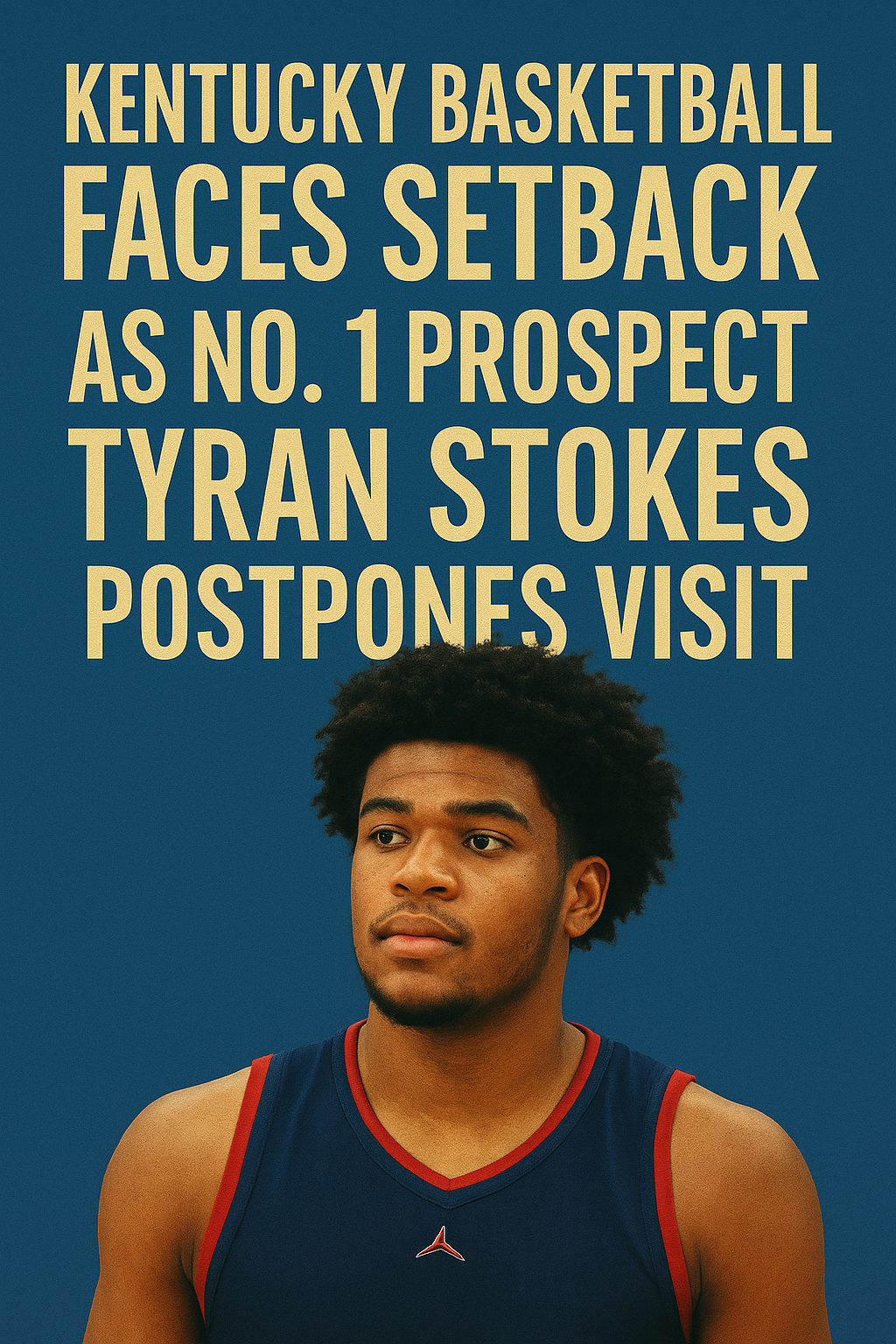
Mark Pope's Second Offseason Hits a Hurdle in Pursuit of Elite Talent Lexington, KY — Kentucky basketball’s push to reclaim national dominance under second-year head coach Mark Pope has hit a temporary but notable hurdle. Tyran Stokes, the consensus No. 1 recruit in the class of 2026, has postponed his scheduled visit to the University of Kentucky. The five-star wing was expected to arrive in Lexington this past Thursday for an extended campus tour through Saturday. Stokes, a 6-foot-7 forward at Notre Dame High School in Sherman Oaks, California, has dominated on the AAU and international circuits. His combination of size, fluid athleticism, and shot-making ability has drawn comparisons to some of the top collegiate wings in recent memory. He was a standout on Team USA’s gold-medal-winning squad at the 2023 FIBA U16 Americas Championship, further cementing his place as one of the most sought-after prospects in the country. Timing and Momentum Matter in Recruiting While the postponement doesn’t rule Kentucky out, it comes during a critical time in recruiting strategy. With summer evaluations and official visits ramping up, every missed opportunity to host an elite recruit is significant. Stokes has already visited Kansas and is expected to visit Gonzaga, with other schools like Oregon, Duke, and Arkansas still pursuing visits of their own. Delays like this can affect perception. When a top recruit reschedules or cancels a visit, it sometimes signals shifting priorities—or an effort to reassess fit, NIL value, or program direction. For Kentucky, maintaining communication and demonstrating commitment will be vital if the staff hopes to regain traction in Stokes’ recruitment later this summer or fall. Pressure to Land Top-Tier Talent Recruiting is the lifeblood of any elite basketball program, and for a blue-blood like Kentucky, expectations are even higher. The Wildcats built their identity on elite classes under former coach John Calipari. Although Pope’s approach may differ stylistically—emphasizing development and experience—it still relies on acquiring elite talent to compete at the highest level. A commitment from Stokes would not only send a strong message to the rest of the 2026 class but also show that Pope can go toe-to-toe with the nation’s top recruiters. Given that Stokes is seen as a potential one-and-done player and possible NBA lottery pick, his decision carries additional weight for program branding, media coverage, and fan enthusiasm. A New Era Under Mark Pope Since taking the helm in 2024, Pope has reenergized the fan base and media by bringing in talent through the transfer portal and laying out a clear vision for the program’s future. Kentucky’s Sweet 16 appearance in his first season offered a glimpse of what’s possible under his leadership, but Pope knows that postseason success alone won’t be enough to meet expectations in Lexington. At his spring media session, Pope emphasized a comprehensive plan to elevate Kentucky in every area—from training facilities and analytics to media presence and NIL competitiveness. He called upon the school’s historic brand to act as a magnet for elite prospects, signaling that UK is not stepping away from its championship standards. Class of 2026 Landscape and Strategic Implications The class of 2026 is shaping up to be one of the most competitive in recent memory. Alongside Stokes, prospects like AJ Dybantsa, Caleb Wilson, and Tre Johnson are already drawing heavy interest. Landing one top-10 player can anchor an entire class, but missing out may force programs to pivot quickly to secondary targets or double down on portal additions. Kentucky’s staff is well aware of these dynamics. They’re expected to remain aggressive on the trail while balancing efforts to build continuity with current and incoming players. With roster fluidity at an all-time high due to the transfer portal, managing both high school and portal recruiting has become a delicate and fast-paced balancing act. Transfer Portal Gains and Roster Strength Despite the hiccup with Stokes’ visit, Pope’s offseason has included key wins in the transfer market. The acquisition of Jaland Lowe from Pittsburgh adds backcourt depth and scoring potential. Though Lowe struggled with efficiency last season, the coaching staff believes he can flourish in Kentucky’s more structured system. In a projected uptempo offense, he’s expected to have more catch-and-shoot opportunities and fewer forced shots. Kentucky’s roster already includes a mix of veterans and rising contributors, giving Pope a strong foundation to build upon. Incoming players like Andrew Carr and Kerr Kriisa offer experience, while returning pieces like Reed Sheppard continue to give the Wildcats a competitive edge in the SEC. Looking Forward Although the delayed visit from Tyran Stokes creates short-term uncertainty, it doesn’t remove Kentucky from contention. Many recruitments—especially for top-tier prospects—play out over extended timelines, with multiple visits, coaching changes, and NIL offers influencing decisions along the way. Coach Pope and his staff will need to stay persistent, maintain a strong presence, and reinforce their pitch as the process continues. With the 2025–26 season on the horizon and recruiting battles heating up, Kentucky’s message must remain clear: it is still one of the premier destinations for basketball talent.
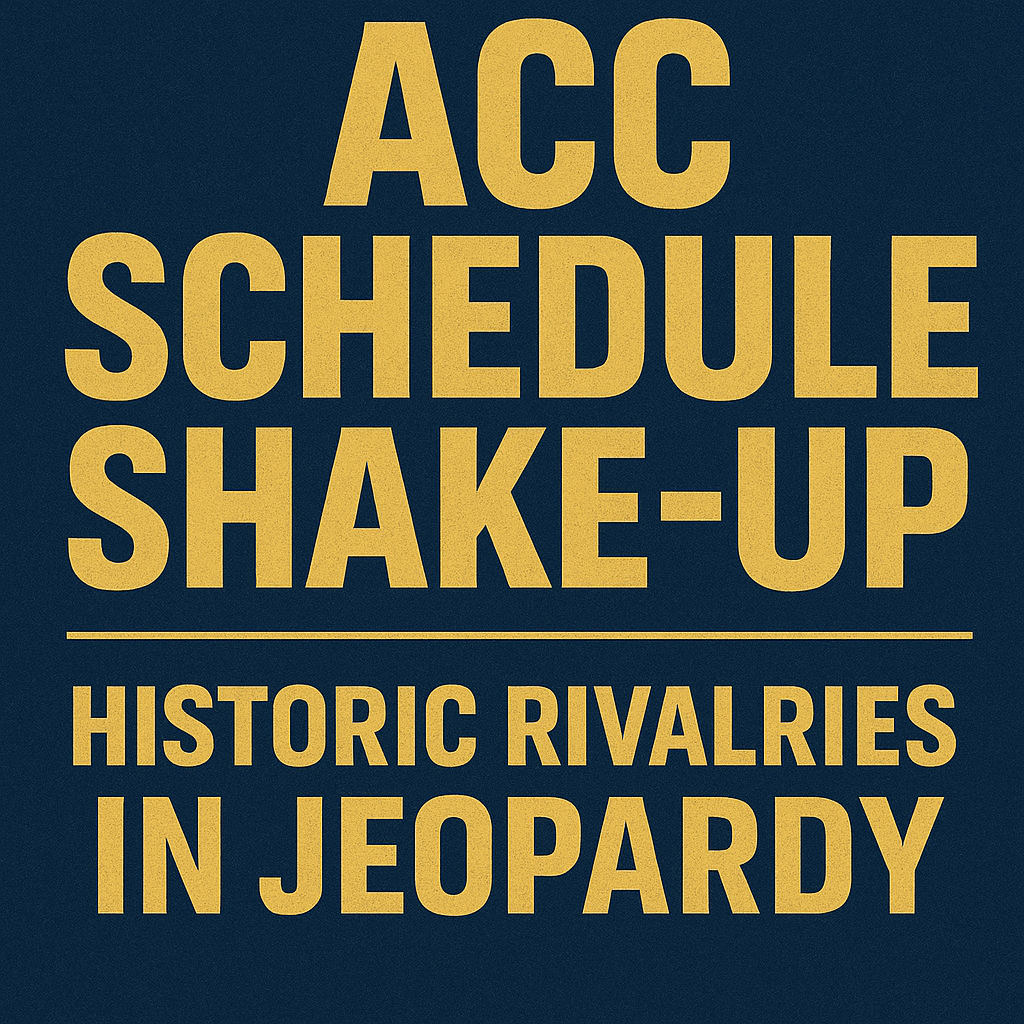
100-Year Tradition at Risk as Conference Reduces League Games for 2025–26 Season A pillar of Atlantic Coast Conference (ACC) basketball history could be undergoing a dramatic shift. Starting in the 2025–26 season, the ACC will reduce its men’s basketball conference schedule from 20 games to 18, a decision that puts the historic home-and-away rivalry between North Carolina and NC State in jeopardy. Since 1920, the Tar Heels and Wolfpack have played twice every season, forming one of the oldest and most passionate rivalries in the sport. That consistent annual doubleheader—totaling 249 matchups over 112 years—could soon be a thing of the past . How the New ACC Schedule Works Under the updated format, each of the ACC's 18 men’s basketball teams will play 18 conference games. Each team is guaranteed to face one designated “primary partner” in both a home and away setting. Additionally, one “variable partner” will be selected annually for a second home-and-away series. The remaining 14 opponents will be played once per season, either home or away. For UNC, the designated permanent rival is Duke, while NC State’s primary partner is Wake Forest. As a result, their once-guaranteed two meetings per season may now occur just once annually, depending on the yearly assignment of their variable partner matchup . Strategic Shift for NCAA Tournament Positioning The conference cited strategic planning and long-term competitiveness as the drivers behind the change. With just four ACC teams making the 2025 NCAA Tournament—a mere 22% of the league’s membership—officials believe the new schedule format allows schools more flexibility in nonconference scheduling. The hope is that trimming two league games will encourage schools to bolster their resumes with higher-quality out-of-conference opponents, potentially improving NET rankings and securing more tournament bids. This decision follows years of decline in ACC representation at March Madness. The league has not sent more than five teams to the tournament since 2021. By returning to an 18-game model (last used from 2012–2019), the ACC aims to reverse that trend. Historical Significance of the Rivalry The UNC–NC State rivalry is not just local—it’s nationally recognized. With UNC winning 169 of the 249 matchups, it’s the most frequent opponent in Tar Heels basketball history. The matchups have often had national implications, and the regional intensity between Raleigh and Chapel Hill continues to energize fans, alumni, and recruits alike. Losing the annual home-and-home could water down one of the league’s most marketable rivalries. While the schools will likely continue to meet at least once per season, the absence of the second matchup removes a guaranteed rivalry highlight from the ACC calendar. What Coaches and Players Face Moving Forward For coaching staffs, the change introduces new scheduling challenges and impacts game preparation. With fewer conference matchups, each loss will carry more weight in league standings. Programs will also need to be more strategic in scheduling nonconference games, balancing resume-building opportunities with travel and budgetary constraints. From a player standpoint, marquee rivalry games provide emotional and competitive highs that often define a season. For both UNC and NC State athletes, the potential loss of a second annual faceoff could reduce exposure and eliminate key developmental opportunities under high-pressure circumstances. Broader Implications for Other ACC Rivalries The realignment doesn’t just affect UNC and NC State. Other long-standing rivalries may also become single-game events. For example, Virginia and Virginia Tech, or Syracuse and Boston College, may also lose their annual home-and-away formats, depending on their designations as permanent or variable partners. The ACC will release the full 2025–26 men’s basketball schedule, including all matchups and variable pairings, later this year. Until then, schools and fans will be left to wonder which rivalries will retain their prominence and which will be pared down to single encounters. A New Era of Flexibility—But at What Cost? Supporters of the change point to the flexibility it gives coaches to customize their schedules. The two additional nonconference slots could be used to add high-profile games or rekindle matchups with former conference opponents, potentially benefiting the ACC’s national profile. Still, tradition remains a major selling point for college athletics. Fewer rivalry games could diminish fan engagement, reduce ticket revenue, and decrease TV viewership. The challenge for the ACC moving forward will be striking the right balance between strategic growth and the preservation of its historic foundation.
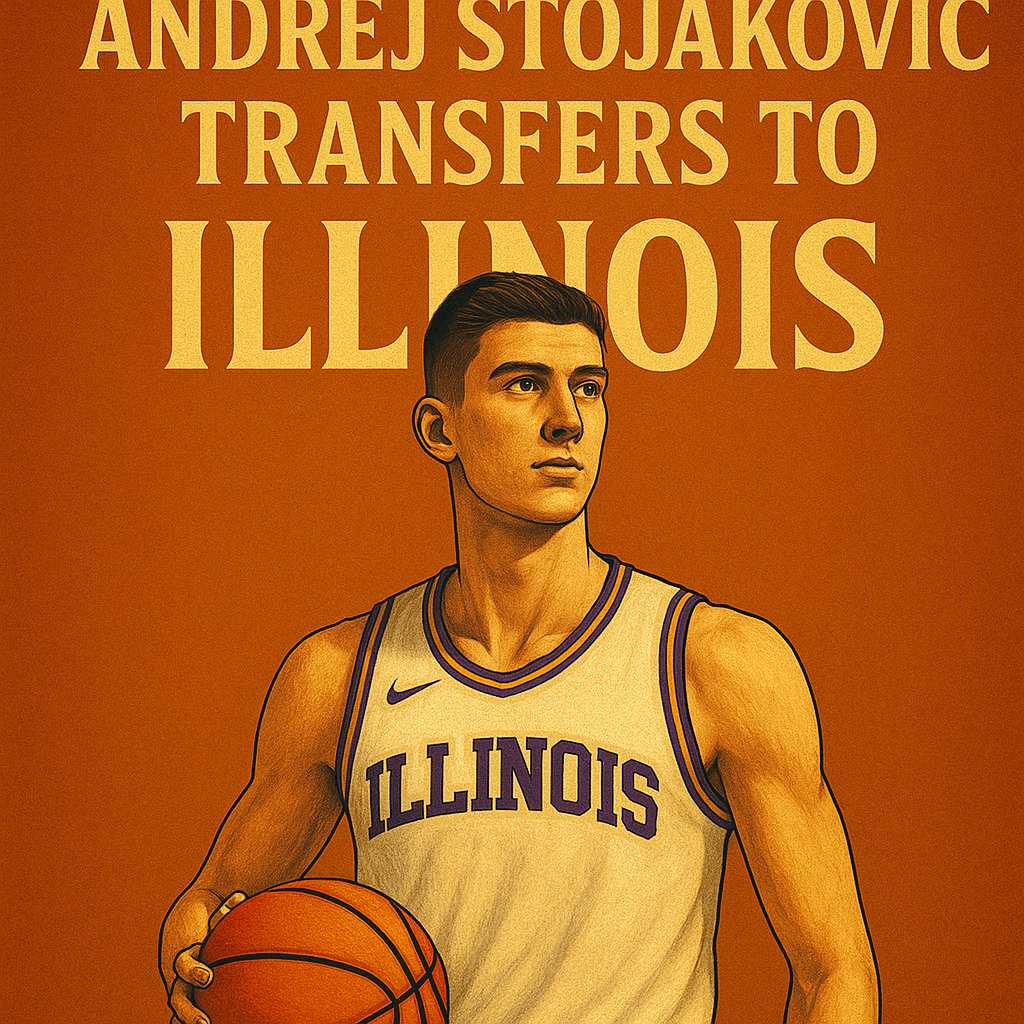
Former Cal Star Set to Lead Illinois’ New-Look Offense Andrej Stojaković, one of the most highly sought-after players in the transfer portal, has officially committed to the University of Illinois, solidifying a major addition to Brad Underwood’s roster for the upcoming 2025-26 college basketball season. The 6-foot-7 guard, and son of former NBA All-Star Peja Stojaković, brings both pedigree and proven production to a team that is reshaping its identity following key departures. Stojaković selected Illinois over other strong contenders, including North Carolina and Stanford, where he began his collegiate career. His decision bolsters Illinois' backcourt and adds a much-needed scoring punch, placing the Illini firmly in the conversation for a preseason top-25 ranking. A Breakout Season at California After a freshman year at Stanford that showed flashes of potential but lacked consistency, Stojaković transferred to California for his sophomore campaign. The move paid immediate dividends. He emerged as one of the top scorers in the ACC, averaging 17.9 points, 4.7 rebounds, and 1.8 assists per game for a Golden Bears team that struggled overall but leaned heavily on his offensive output. Stojaković led Cal in scoring and was sixth overall in the ACC. His role expanded significantly, with an average of nearly 14 shot attempts per game. Although his shooting percentages hovered at 42.7% from the field and 31.8% from three-point range, he closed the season strong, posting career-best performances in the ACC Tournament. Over the final two games, he averaged 33 points and connected on 7-of-13 three-point attempts, earning a spot on the ACC All-Tournament First Team . His breakout year drew national attention, positioning him among the top 40 players in the transfer portal according to 247Sports. Why Illinois Made Sense Illinois’ aggressive pursuit of Stojaković highlighted just how pivotal they believe he can be for their immediate success. Head coach Brad Underwood has a strong history of developing versatile, bigger guards, and the program needed to rebuild its perimeter following the departures of Kasparas Jakucionis and Will Riley to the NBA Draft . Stojaković fits seamlessly into the Illini’s offensive system, offering a blend of scoring, ball-handling, and the ability to space the floor. His versatility allows him to bring the ball up the court or operate as a catch-and-shoot threat from the wing, providing Underwood with the type of flexible offensive weapon that has driven Illinois’ success in recent years. Beyond his skills, his experience playing major college minutes will be critical for a roster that will feature a significant international influence next season. A New International Identity Stojaković’s arrival adds to an increasingly global flavor for the Fighting Illini. He joins Serbian newcomers Mihailo Petrovic and David Mirkovic, as well as Croatian brothers Zvonimir and Tomislav Ivišić, creating what may be the most internationally influenced roster in the Big Ten . This international infusion signals a philosophical shift for Underwood, who has focused recruiting efforts both domestically and abroad. The additions aim to blend high basketball IQ, positional size, and versatility, all traits that fit well into the coach’s evolving style of play. Illinois’ new roster construction could give the team an offensive edge in a Big Ten traditionally known for its physicality and slower pace. Projected Role and Expectations At Illinois, Stojaković is expected to take on a featured role. Based on returning production, he will likely be the team’s leading scorer entering the season. His scoring ability at all three levels—on catch-and-shoot plays, off the dribble, and in post-up situations—will allow him to impact games immediately. Additionally, his defensive tools, including lateral quickness and shot-blocking instincts, should allow him to contribute on both ends of the floor. Stojaković recorded a career-high six blocks in a game against Notre Dame last season and totaled 34 blocks on the year . Consistency and efficiency will be key for Stojaković’s next step. At times, he struggled with shot selection and turnovers at Cal, especially when facing physical defensive schemes. Under Underwood’s structured offense, those aspects of his game are expected to refine naturally. A New Chapter with High Expectations Illinois finished the 2024-25 season with a 22-13 record, reaching the second round of the NCAA Tournament before falling to Kentucky. With a strong recruiting class and strategic portal acquisitions, the Illini are building momentum for a deeper postseason run. Adding a proven scorer like Stojaković—who brings experience from two Power Six programs—positions Illinois to not only contend in the Big Ten but also potentially climb into national relevance during the 2025-26 campaign. As Stojaković transitions to his third college program in three years, the expectations will be high. Yet with a proven ability to adapt, a lineage of basketball excellence, and a roster built to maximize his strengths, he has a unique opportunity to flourish in Champaign.

